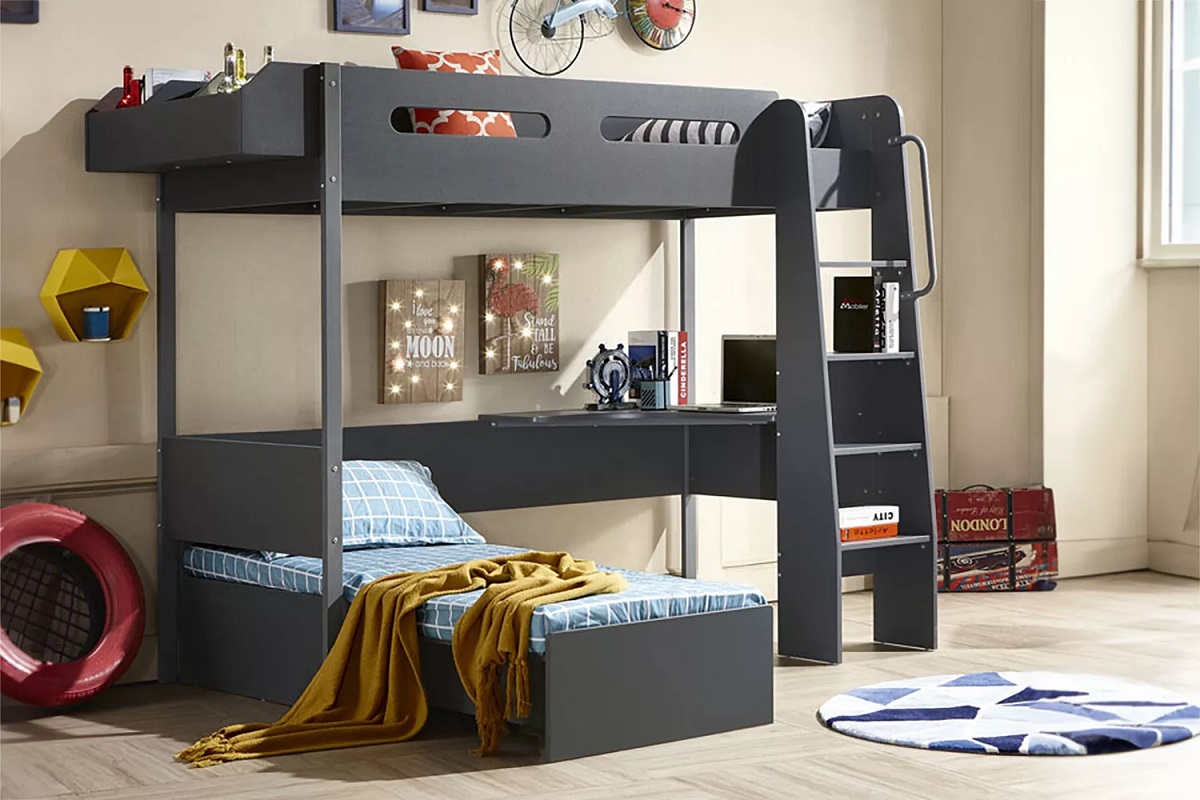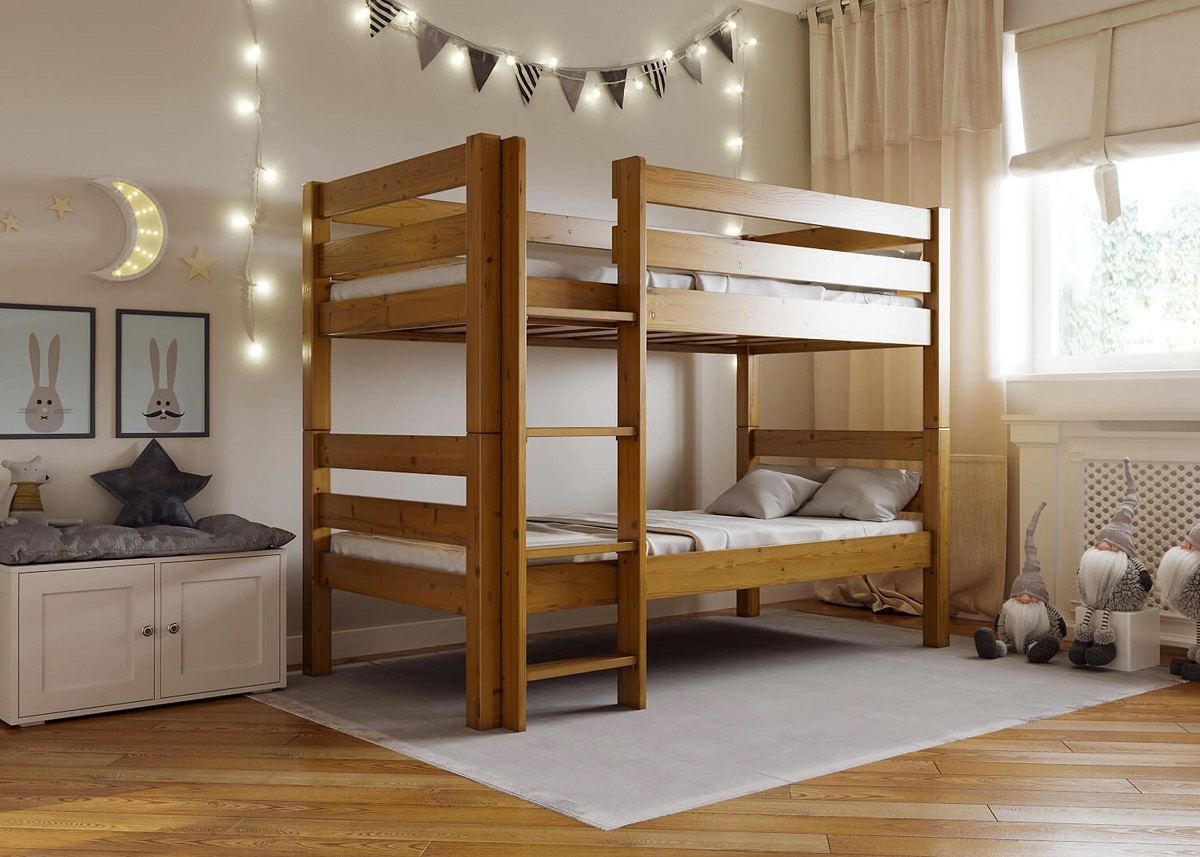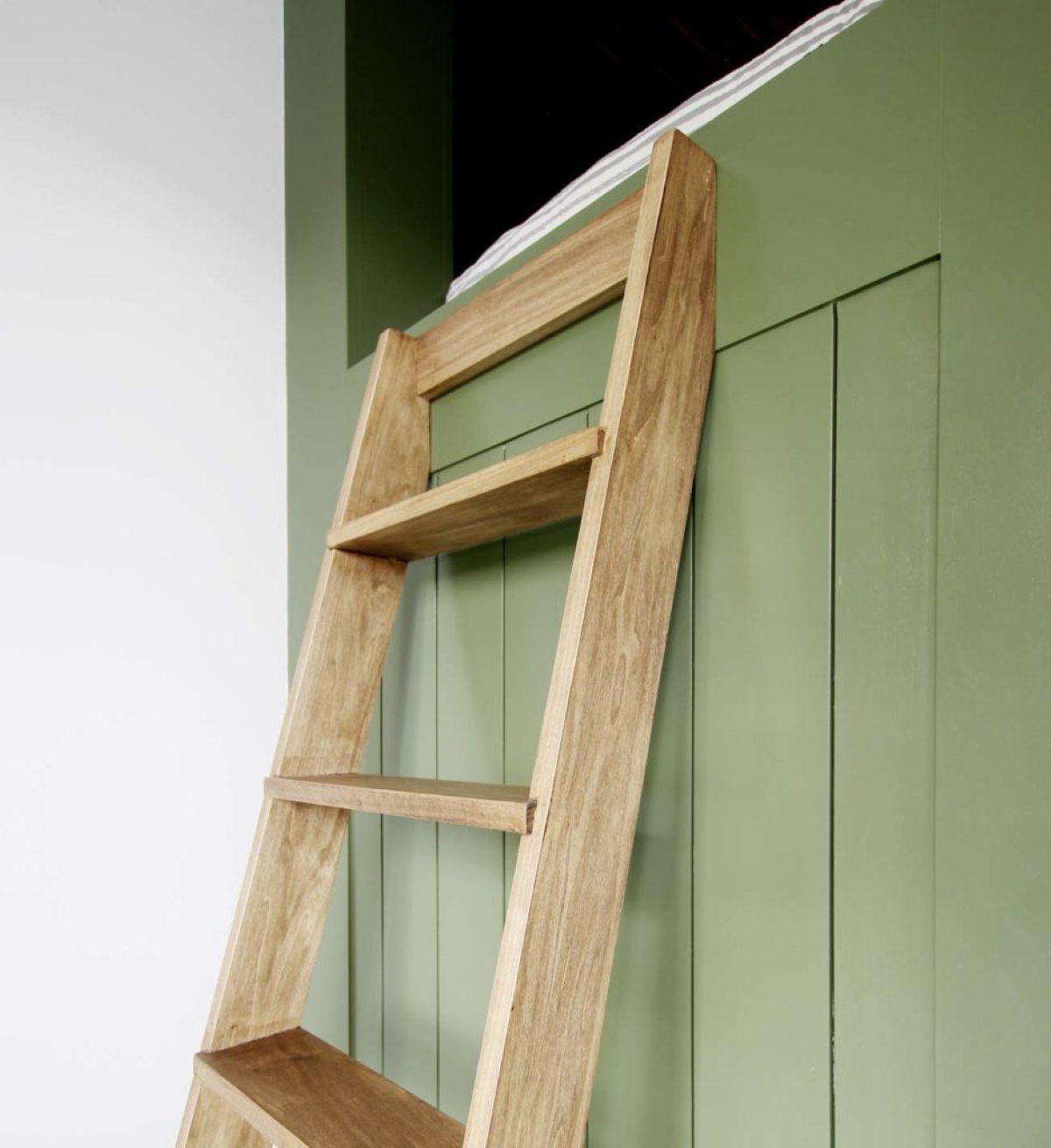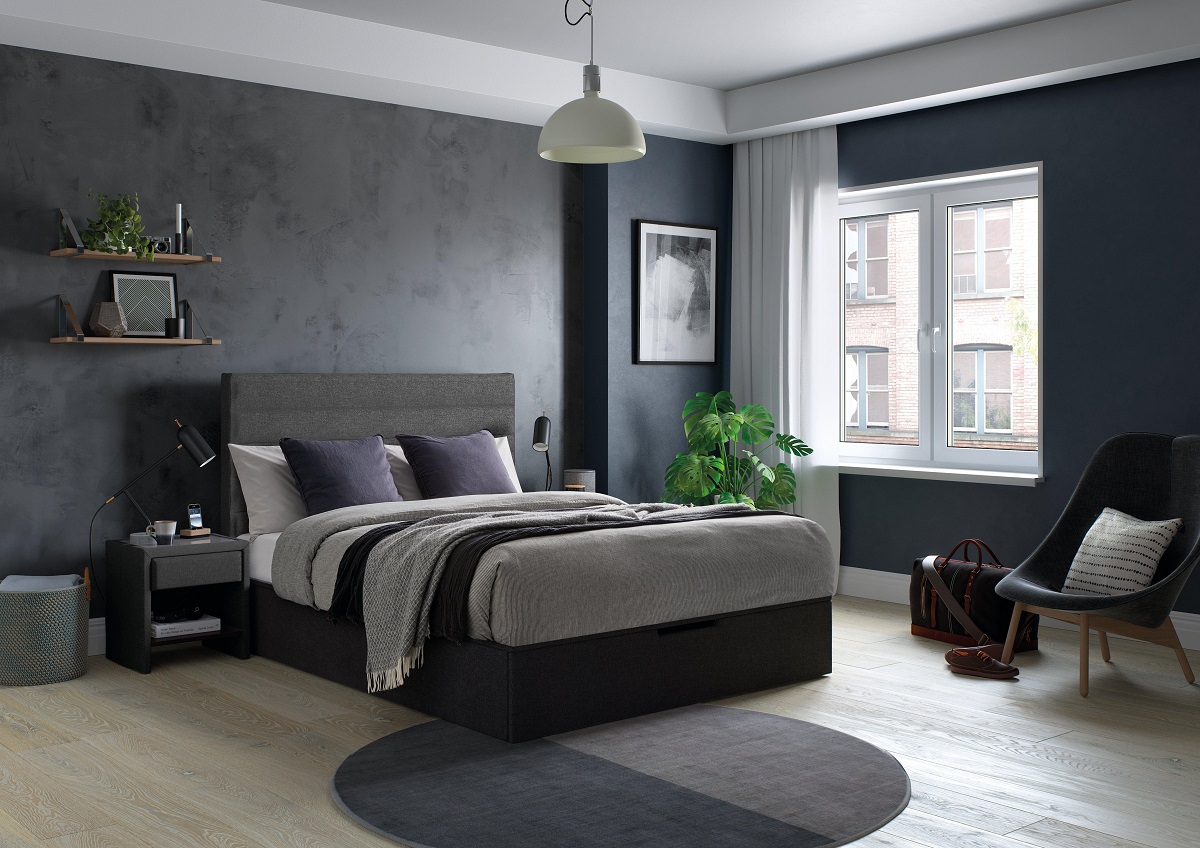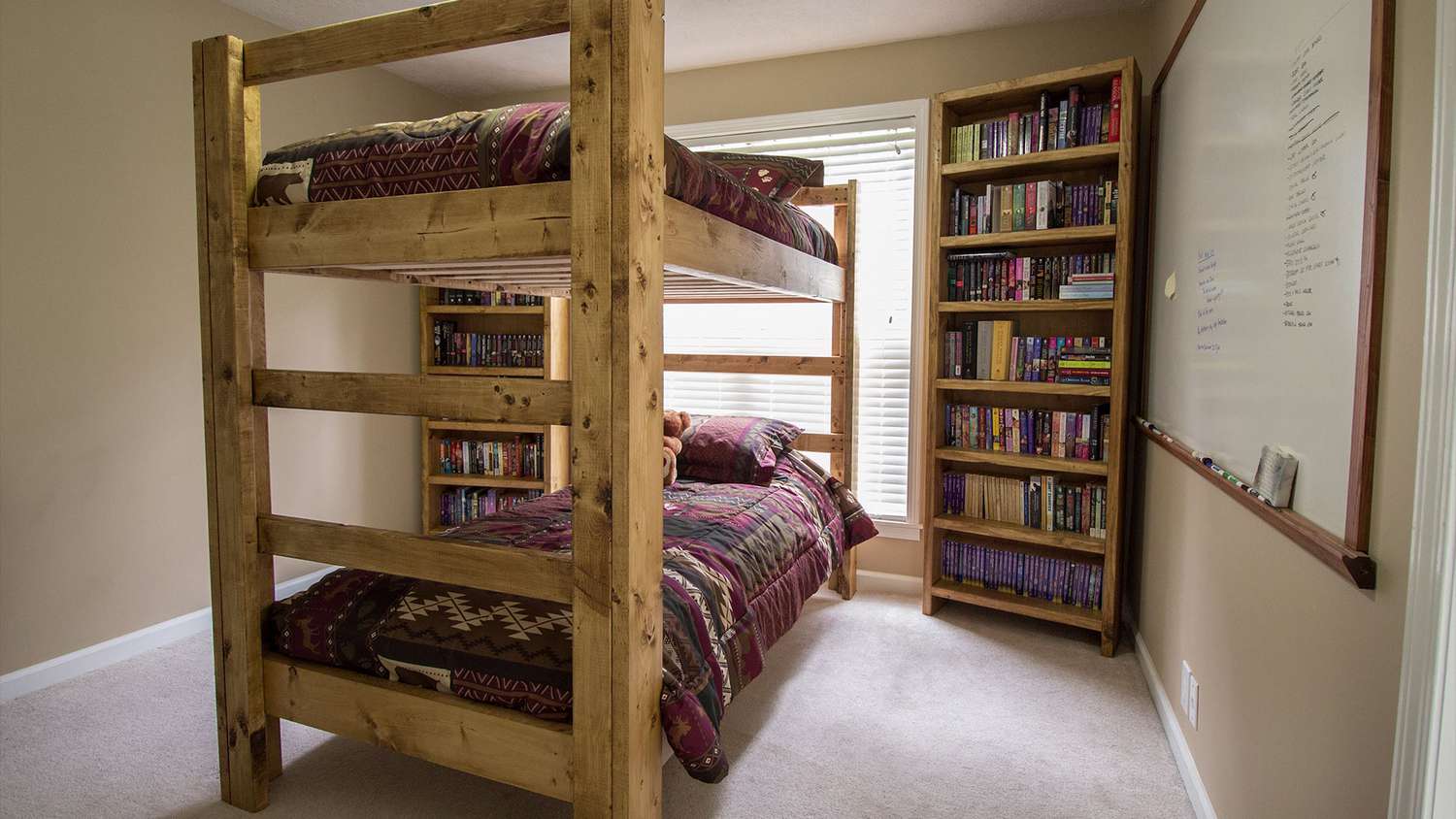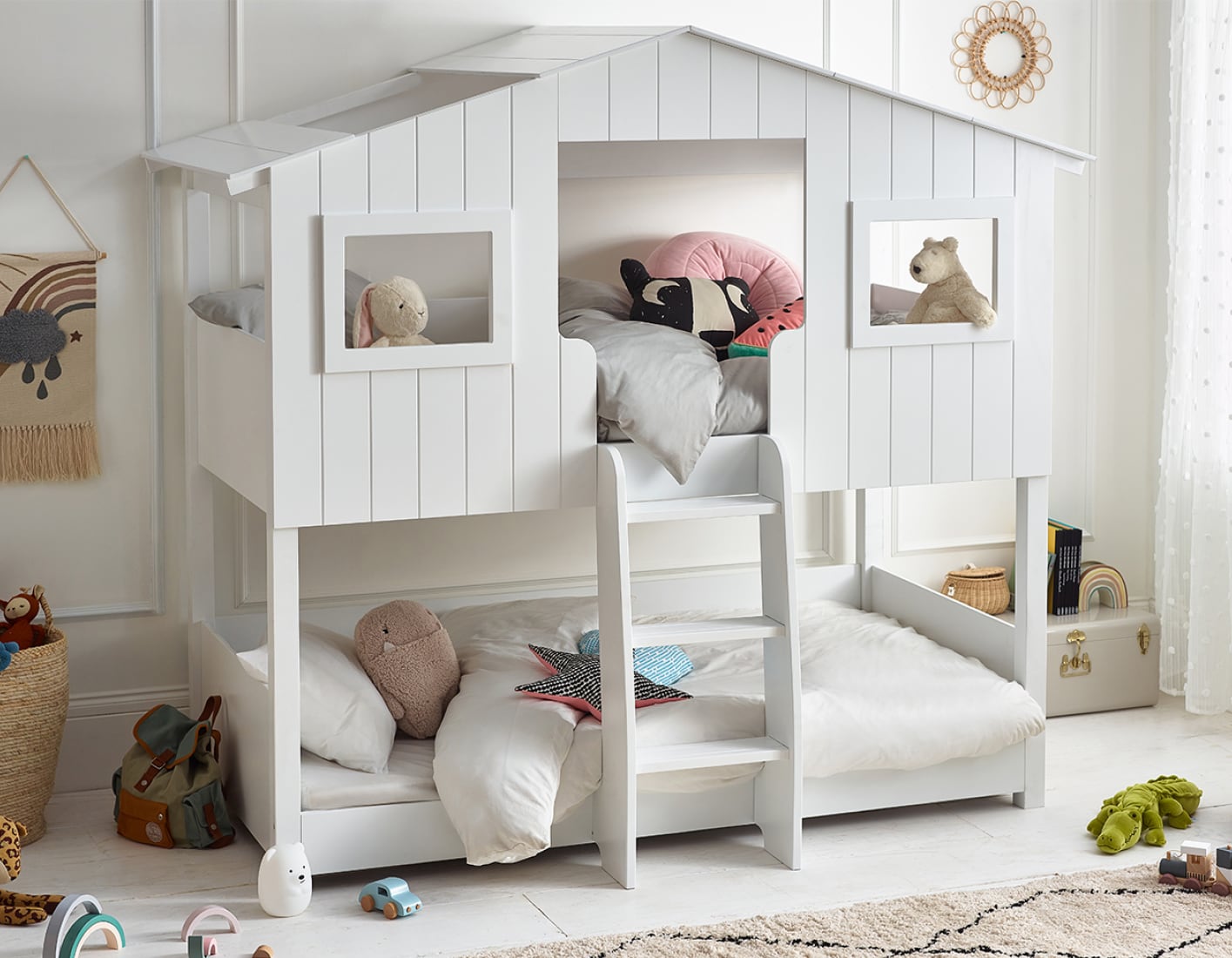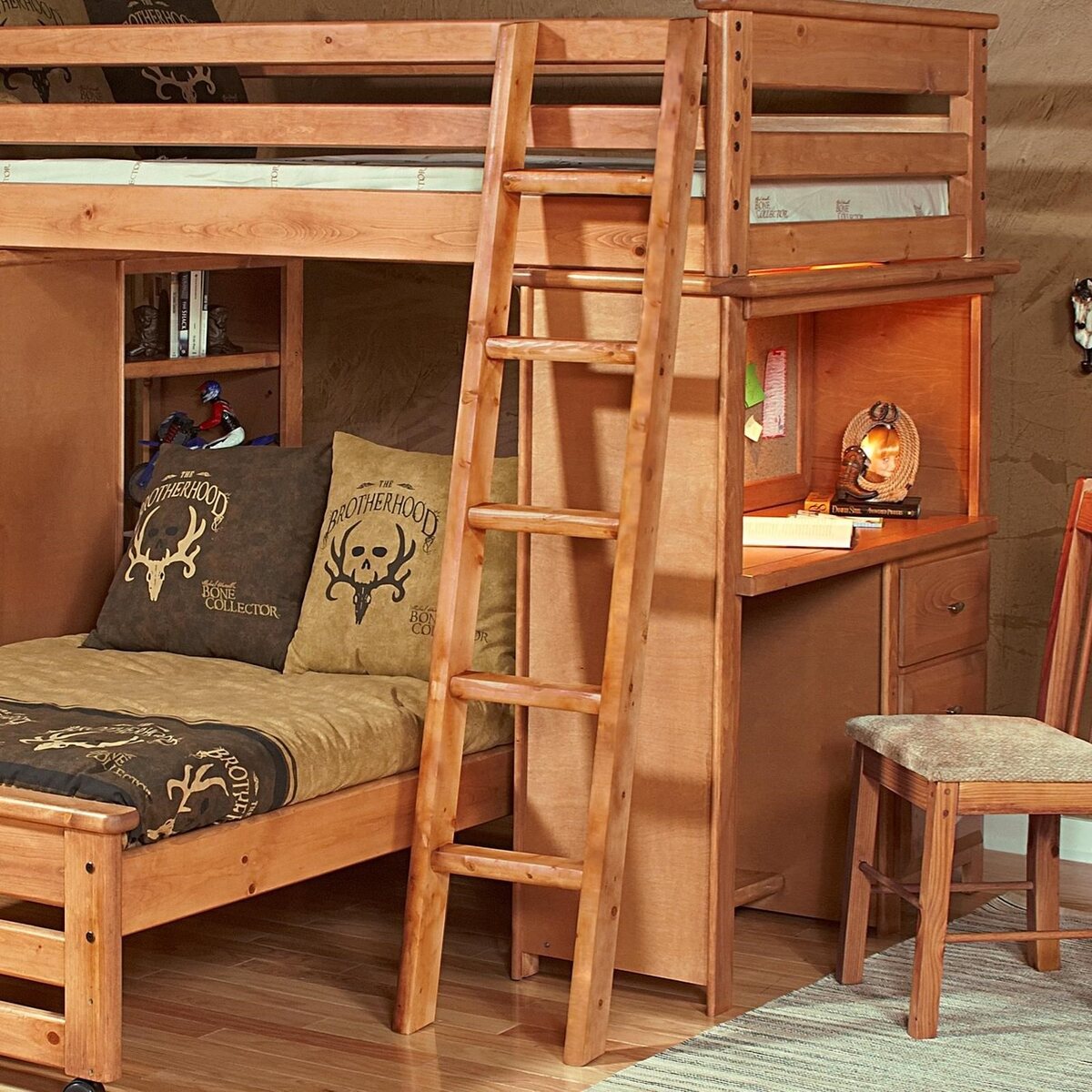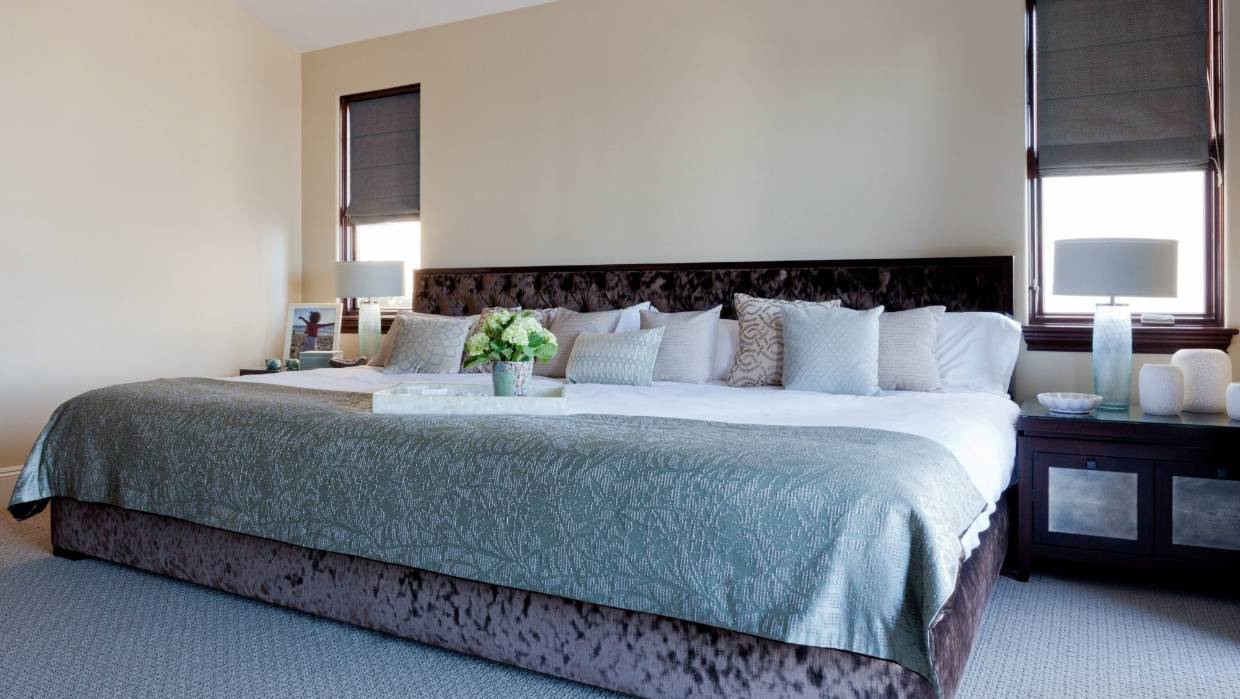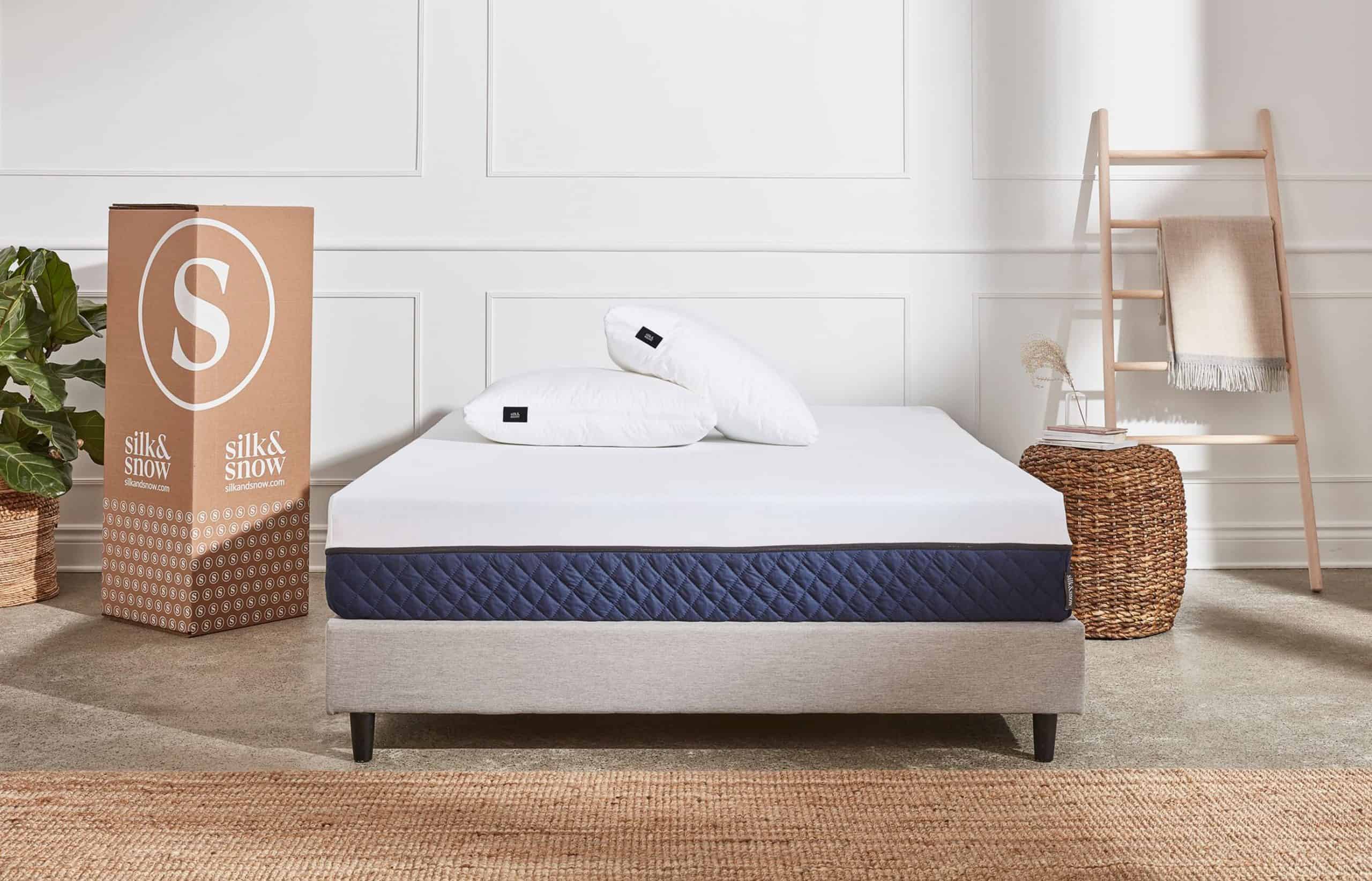Home>Furniture>Bedroom Furniture>What Size Mattress For A Bunk Bed
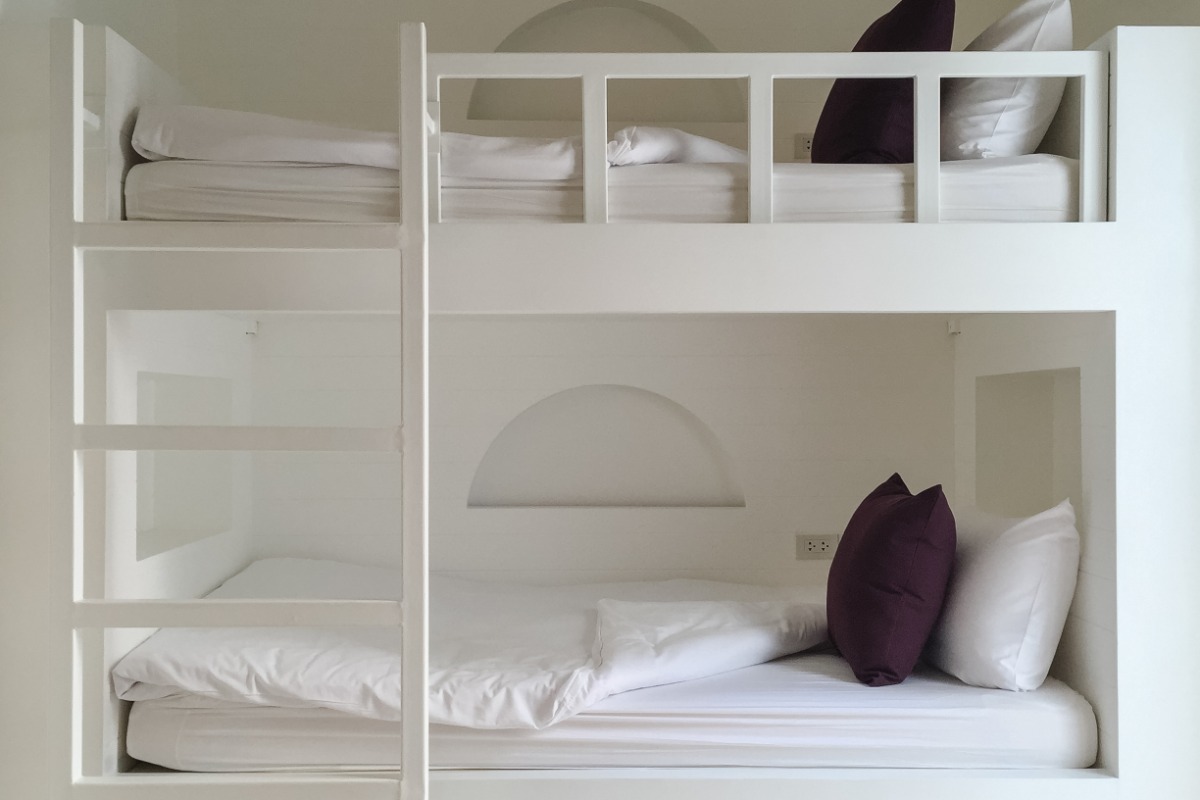

Bedroom Furniture
What Size Mattress For A Bunk Bed
Modified: February 25, 2024
Looking for the perfect mattress size for your bunk bed? Discover the ideal bedroom furniture with our expert guide. Ensure a comfortable and space-saving solution.
(Many of the links in this article redirect to a specific reviewed product. Your purchase of these products through affiliate links helps to generate commission for Storables.com, at no extra cost. Learn more)
Introduction
Choosing the right mattress for your bunk bed is essential for a comfortable and restful sleep experience. Bunk beds are a popular choice for maximizing space in bedrooms, especially for families with children or in shared living spaces. Whether you’re furnishing a child’s room, a guest room, or a vacation home, finding the perfect mattress size for your bunk bed is crucial.
When it comes to selecting the right mattress, several factors need to be considered, including the size of the bunk bed, the weight capacity, and the comfort preferences of the sleepers. In this article, we will explore the different mattress sizes available for bunk beds and discuss the factors you should keep in mind when making your decision.
So, how do you choose the right mattress size for your bunk bed? Let’s find out.
Key Takeaways:
- Choose the right mattress size for your bunk bed by considering factors such as bunk bed size, weight capacity, and safety standards to ensure a comfortable and safe sleep environment for all sleepers.
- Twin, full, or queen size mattresses offer different sleeping space options for bunk beds, catering to children, teenagers, or adults. Prioritize comfort, support, and safety when selecting the perfect mattress size.
Read more: What Size Mattress Fits A Bunk Bed
Factors to Consider When Choosing a Mattress for a Bunk Bed
When it comes to selecting a mattress for a bunk bed, there are several important factors to consider. Choosing the right mattress will not only provide a comfortable sleep but also ensure the safety and functionality of the bunk bed. Here are the key factors to keep in mind:
1. Size of the Bunk Bed:
The size of the bunk bed will determine the size of the mattress you need. Bunk beds come in various sizes, such as twin, full, and queen. Measure the dimensions of your bunk bed to determine the appropriate mattress size. It’s crucial to choose a mattress that fits snugly within the bunk bed frame to prevent any gaps that could potentially cause injury.
2. Weight Capacity:
Consider the weight capacity of the bunk bed when selecting a mattress. Bunk beds typically have weight limits for the top and bottom bunks. Ensure that the chosen mattress can support the weight of the sleeper without exceeding the bunk bed’s weight capacity. This will ensure the structural integrity and safety of the bunk bed.
3. Thickness and Height:
The thickness of the mattress and its height can impact the overall space and safety of the bunk bed. Consider the upper bunk’s height and the space available between the top and bottom bunk. Opt for a mattress that provides sufficient support and comfort while allowing for safe headroom on the upper bunk.
Read more: What Size Is A Toddler Bed Mattress
4. Mattress Type:
Choose a mattress type that aligns with your comfort preferences and budget. There are various mattress types available, including innerspring, foam, hybrid, and latex. Each type offers different levels of support, pressure relief, and motion isolation. Consider the specific needs of the sleepers, such as back support for adults or hypoallergenic materials for those with allergies.
5. Safety Considerations:
Safety is of utmost importance, especially when it comes to bunk beds. Ensure that the mattress you choose meets safety standards and regulations. Look for mattresses that are certified for safety and quality, such as those that are CertiPUR-US certified, indicating they are free from harmful chemicals and have low emissions.
6. Budget:
Set a budget for your mattress purchase and consider the cost of the mattress along with other factors. While it’s essential to find a mattress that fits within your budget, prioritize comfort and safety over price alone. Investing in a high-quality mattress will provide long-term benefits in terms of durability and sleep quality.
By considering these factors, you can confidently choose a mattress that suits your bunk bed and ensures a comfortable and safe sleep environment.
Twin Size Mattress for Bunk Beds
A twin size mattress is often the most common choice for bunk beds, especially for children’s bunk beds. Twin mattresses typically measure 39 inches wide by 75 inches long, making them an ideal fit for standard twin bunk beds. Here are some important factors to consider when selecting a twin size mattress for your bunk bed:
Read more: What Size Mattress For A Trundle Bed
1. Space-saving:
Twin size mattresses are an excellent choice for bunk beds as they provide enough sleeping space while leaving ample room for the bunk bed frame. This size is often preferred for smaller bedrooms or spaces where maximizing floor space is key.
2. Weight capacity:
Check the weight capacity of your bunk bed to ensure that the twin size mattress can adequately support the sleeper’s weight. It is important to choose a mattress that offers the necessary support and meets the weight restrictions of your specific bunk bed.
3. Thickness:
Consider the thickness of the twin mattress for the upper bunk. A thinner mattress is usually recommended to ensure there is sufficient headroom between the top and bottom bunks. A mattress with a thickness of 6 to 8 inches is often suitable for most bunk beds.
4. Comfort and Support:
Choose a twin size mattress that provides the desired level of comfort and support for the sleeper. Consider factors such as firmness, pressure relief, and motion isolation. Foam or hybrid mattresses are popular choices for bunk beds, as they offer a balance of comfort and support.
5. Safety Considerations:
Ensure that the twin size mattress meets safety standards and fits securely within the bunk bed frame. The mattress should not have any gaps or overhang that could pose a safety risk. It’s important to choose a mattress that provides a snug fit to prevent accidents.
Overall, twin size mattresses are an excellent choice for bunk beds, especially for children or smaller bedroom spaces. They provide adequate sleeping space, are readily available, and offer a range of options to suit different comfort preferences and budgetary constraints.
Full Size Mattress for Bunk Beds
A full size mattress, also known as a double mattress, is a larger option for bunk beds compared to twin size mattresses. Full size mattresses measure approximately 54 inches wide by 75 inches long, providing more sleeping space for individuals or accommodating two sleepers comfortably. Here are some factors to consider when choosing a full size mattress for a bunk bed:
1. Sleeping Space:
A full size mattress offers more sleeping space compared to a twin size mattress, making it a suitable choice for older children, teenagers, or adults who require extra room. With a width of 54 inches, individuals can sleep more comfortably without feeling cramped.
2. Bunk Bed Size:
Before selecting a full size mattress, ensure that your bunk bed can accommodate the larger dimensions. Measure the dimensions of your bunk bed frame to ensure the full size mattress will fit properly. It’s crucial to check the width, length, and height restrictions of the bunk bed to prevent any safety or space-related issues.
Read more: What Size Is A Single Bed Mattress
3. Weight Capacity:
Full size mattresses are larger and heavier than twin size mattresses, so it’s important to check the weight capacity of your bunk bed. Make sure that the full size mattress doesn’t exceed the weight limits specified by the manufacturer. This will ensure the safety and stability of the bunk bed.
4. Thickness and Height:
Consider the thickness and height of the full size mattress to ensure it fits comfortably within the bunk bed frame. Remember to take into account the headroom between the top and bottom bunk. Opt for a mattress with a moderate thickness, typically 8 to 10 inches, to maintain a safe distance between the two bunks.
5. Comfort and Support:
Choose a full size mattress that offers the desired level of comfort and support for the sleepers. Consider factors such as firmness, pressure relief, and motion isolation. Options such as foam, hybrid, or innerspring mattresses are available in full size and offer different levels of comfort and support.
6. Safety Considerations:
Ensure that the full size mattress fits securely within the bunk bed frame and doesn’t leave any gaps or overhang. This is crucial for preventing accidents and ensuring the safety of the sleepers. It’s also important to check that the mattress is certified for safety and quality, such as being CertiPUR-US certified.
Full size mattresses offer more sleeping space, making them ideal for older children, teenagers, or adults sharing the bunk bed. With careful consideration of the size, weight capacity, comfort, and safety, you can choose a full size mattress that perfectly fits your bunk bed and provides a comfortable and restful sleep environment.
Read more: What Size Is A Hospital Bed Mattress
Queen Size Mattress for Bunk Beds
A queen size mattress is a larger and more luxurious option for bunk beds, providing ample sleeping space for individuals or couples. Queen size mattresses measure approximately 60 inches wide by 80 inches long, making them a popular choice for larger bedrooms or when extra space is desired. Here are some factors to consider when choosing a queen size mattress for a bunk bed:
1. Sleeping Space:
A queen size mattress offers plenty of sleeping space for individuals or couples, allowing for a more spacious and comfortable sleep experience. With a width of 60 inches, it provides additional room compared to full or twin size mattresses, perfect for those who prefer extra space or for accommodating more than one sleeper.
2. Bunk Bed Size:
Before considering a queen size mattress for a bunk bed, it’s important to check the dimensions of the bunk bed frame. Queen size mattresses require a wider bunk bed frame and more headroom space between the top and bottom bunks. Ensure that your bunk bed can accommodate the larger dimensions and weight of a queen size mattress.
Read more: What Size Is A Single Bed Mattress
3. Weight Capacity:
Due to their larger size, queen size mattresses are heavier than twin or full size mattresses. Check the weight capacity of your bunk bed to ensure it can support the weight of a queen size mattress comfortably. It’s crucial to choose a sturdy and well-built bunk bed that can handle the added weight for safety and stability.
4. Thickness and Height:
Consider the thickness and height of the queen size mattress to ensure it fits within the bunk bed frame and provides sufficient headroom. Select a mattress with a moderate thickness, typically 10 to 12 inches, to maintain a safe distance between the two bunks and provide enough support and comfort for the sleepers.
5. Comfort and Support:
Choose a queen size mattress that offers exceptional comfort and support for a restful sleep experience. Consider factors such as firmness level, pressure relief, and motion isolation. Popular options for queen size mattresses include memory foam, hybrid, or latex mattresses, which provide a combination of comfort and support.
6. Safety Considerations:
Ensure that the queen size mattress fits securely within the bunk bed frame without any gaps or overhang that could pose a safety risk. Check that the mattress meets safety standards and certifications, such as being CertiPUR-US certified, indicating it is free from harmful chemicals and safe for use.
While queen size mattresses may not be as common for bunk beds as twin or full size mattresses, they can be a luxurious choice for those who desire ample sleeping space or have larger bunk bed frames. Taking into account the size of the bunk bed, weight capacity, comfort, and safety considerations will help you choose the right queen size mattress for your bunk bed setup.
Conclusion
Choosing the right mattress for your bunk bed is crucial for ensuring a comfortable and restful sleep experience. Whether you are furnishing a child’s room, a guest room, or a vacation home, selecting the appropriate mattress size and considering factors such as weight capacity, comfort, and safety is essential.
Twin size mattresses are the most common choice for bunk beds, offering adequate sleeping space while maximizing floor space. They are ideal for children or smaller bedroom spaces. Pay attention to the weight capacity of the bunk bed and choose a mattress that provides the necessary support.
Full size mattresses are a great option for older children, teenagers, or adults who require more sleeping space. They offer additional comfort without sacrificing safety. Be sure to measure the dimensions of your bunk bed frame to ensure the full size mattress will fit properly.
Queen size mattresses provide the most generous sleeping space, suitable for individuals or couples in need of extra room. However, it’s important to ensure that your bunk bed frame can accommodate the larger dimensions and weight of a queen size mattress.
Regardless of the mattress size you choose, factors such as thickness, height, comfort, and safety should be taken into consideration. Opt for mattresses that meet safety standards, offer proper support, and fit securely within the bunk bed frame to prevent accidents and ensure a restful sleep environment.
Remember to set a budget for your mattress purchase, but prioritize comfort and safety over price alone. Investing in a high-quality mattress will provide long-term benefits in terms of durability and sleep quality.
In conclusion, by considering the size of the bunk bed, weight capacity, comfort preferences, and safety considerations, you can confidently select the perfect mattress for your bunk bed setup. A well-chosen mattress will not only provide a comfortable sleep but also contribute to the overall functionality and aesthetic appeal of the bunk bed.
Frequently Asked Questions about What Size Mattress For A Bunk Bed
Was this page helpful?
At Storables.com, we guarantee accurate and reliable information. Our content, validated by Expert Board Contributors, is crafted following stringent Editorial Policies. We're committed to providing you with well-researched, expert-backed insights for all your informational needs.
